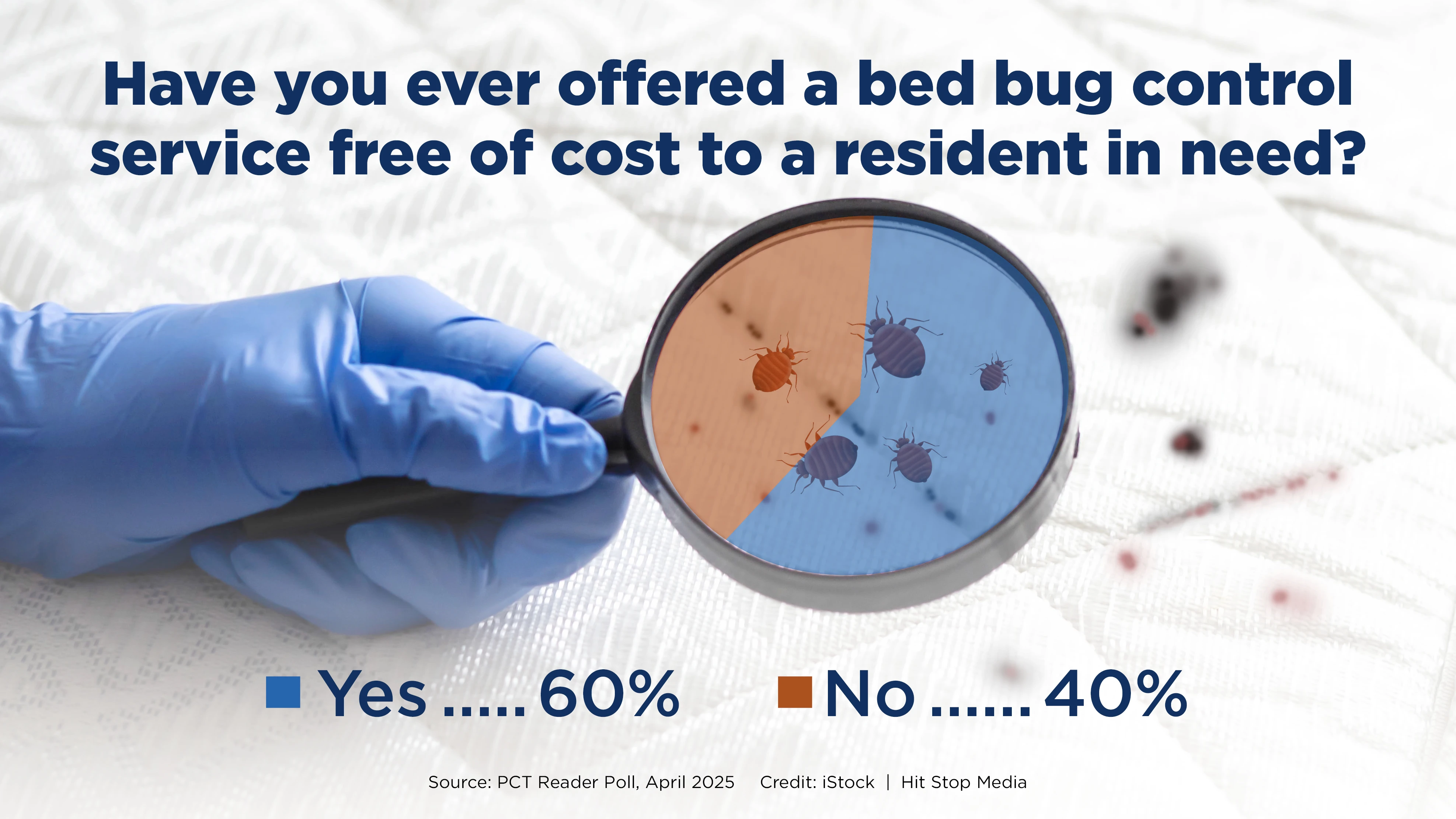Water, In Any Form, Is Necessary For Survival
Water holes! That’s one thing thirsty pests seek when they blunder into any structure. A booklet, Prevention and Control of Decay in Homes, by A. Verrall and T.L. Amburgey (USGPO) describes many sites including those in which condensation is created with dew point temperatures, especially in humid coastal regions. Pest management professionals should spend time monitoring these sites just as predators in a jungle monitor oases in their area for prey.
According to P.B. Cornwell, author of The Cockroach, water is probably the most limiting factor in establishment of cockroaches in buildings. He claims that they can die of desiccation in two days without water in hot weather. Water is also critical to ants and many other structural pests. Ant species such as the pharaoh ant can transport droplets of water. An entire colony can be moved overnight to a site with more water.
NOT ALWAYS LIQUID. It is a Myth Con-ception, however, that the water needs to be in liquid form for ALL pests. Many arthropods do quite well without access to liquid water. Dr. Eric Smith suggests that flea larvae can survive in crevices of a hardwood floor in which they find food. This microclimate has a slightly higher relative humidity (RH) because of the pests’ moisture which is retained in hygroscopic hair and dust particles. Drywood termites and fabric pests are physiologically capable of deriving metabolic water from relatively dry substrates.
There are still other household pests that get their water not from free water or from their food, but from humid air. In a paper by Wharton and Furumizo, sent to me by Dr. Roy Furumizo, an entomologist with the Hawaii Depart-ment of Health, I learned how the American house dust mite in dry dust gets water from humid air. The salt that absorbs moisture from the air also prevents water loss by plugging pores. He found that at a relative humidity above 70%, at their critical equilibrium activity (CEA), 75% of the weight of a female American house dust mite is water. But at reduced RH, below their CEA, 30% of its body water can be lost in about 14 hours.
I wondered how this ubiquitous creature can survive in air conditioned homes where the RH is controlled often below 70%. I placed a container of calcium chloride (DampRid) in a clothes closet in my air-conditioned Florida apartment, with the door left open.
RESULTS. I was amazed at the amount of water that drained off these deliquescent crystals in a week. It is a Myth Conception that the air in every corner of a home is uniform. The humidity under a sleeping person in bed or a couch potato watching a ballgame is high enough to replenish all the moisture the house dust mite had lost. Pockets of dust in cluttered closets can support sizable cultures of the house dust mite. Humans and pets shed incredibly large amounts of microscopic-sized mite food daily, particles that represent much of the invisible dust load in the air. The air becomes charged with these allergens every time the sheets are changed, or when a person sits on a sofa cushion (1/6th of the weight of an old cushion can be dust mite parts), or when a household grade vacuum cleaner recycles the particles into the air. Judith Mollet, in a talk at the NPCA Convention in October 1997, showed how easily house dust mites are dispersed throughout the home by human activity.
According to Dr. Eric Smith, author of the NPCA Field Guide to Structural Pests, protonymphs and tritonymphs of the European house dust mite can undergo a prolonged quiescent period of several months during which they are resistant to desiccation. Considering their phenomenal ability to propagate, the small hidden pockets of dust can be a serious problem for people and pets with house dust mite allergies, even if there are no "water holes."
Another pest that gets its vital water from the air is the booklouse. This psocid will desiccate if the RH is below 50%, but readily absorbs moisture and becomes turgid, sometimes in as little as two to three hours, according Smith in the NPCA Field Guide to Structural Pests. Piles of dead psocids inches deep were found between bags of oats stored for more than a year in a non-air-conditioned warehouse. This is described by Stoy Hedges in the 8th Edition of the Mallis Handbook of Pest Control.
Few insects are able to control their air requirements as effectively as sub-terranean termites. With skin so porous that only in airtight galleries in wood and in active tubes outside galleries can they survive, they go to great lengths to ensure that humidity levels remain high inside the colony. Subterranean termites learned how to live in hostile atmospheres long before our astronauts did, serving as another example of the importance of moisture in insect survival.
Harry Katz, a PCT contibuting editor, may be contacted at 954/427-9716.

Explore the January 1999 Issue
Check out more from this issue and find your next story to read.
Latest from Pest Control Technology
- Target Specialty Products, MGK Partner for Mosquito Webinar
- Cockroach Control and Asthma
- FORSHAW Announces Julie Fogg as Core Account Manager in Georgia, Tennessee
- Envu Introduces Two New Innovations to its Pest Management Portfolio
- Gov. Brian Kemp Proclaimed April as Pest Control Month
- Los Angeles Ranks No. 1 on Terminix's Annual List of Top Mosquito Cities
- Kwik Kill Pest Control's Neerland on PWIPM Involvement, Second-Generation PCO
- NPMA Announces Unlimited Job Postings for Members





